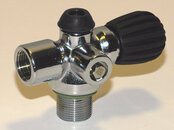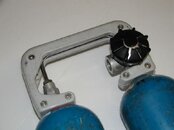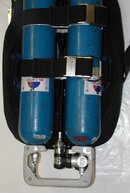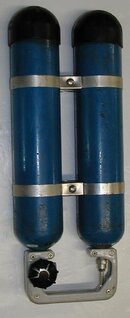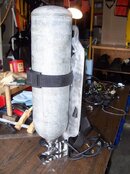Which way up are firefighters rigs and why??...
To be fair, firefighting and mine-safety rigs do have protectors or valves with resilient bumpers to protect them — as they should. I find Interspiro’s Divator doubles protector used on diving and firefighting rigs to be especially elegant. Unfortunately it is only a single-regulator manifold. Attached are images of my old Divator 324 doubles.
Most rebreathers are also valve down and use the larger center-mounted CO2 absorbent canister to protect valves and regulators, sometimes plus a protector. The reason that the majority of dive cylinders are valve-up is it is cheaper and too few divers complain. It would be very simple and inexpensive to design a production doubles manifold with integral protector if manufacturers though there was a market. The first image is a single rebreather valve with a small bumper. Of course commercial divers wear their bailout bottles valve-down as well.




